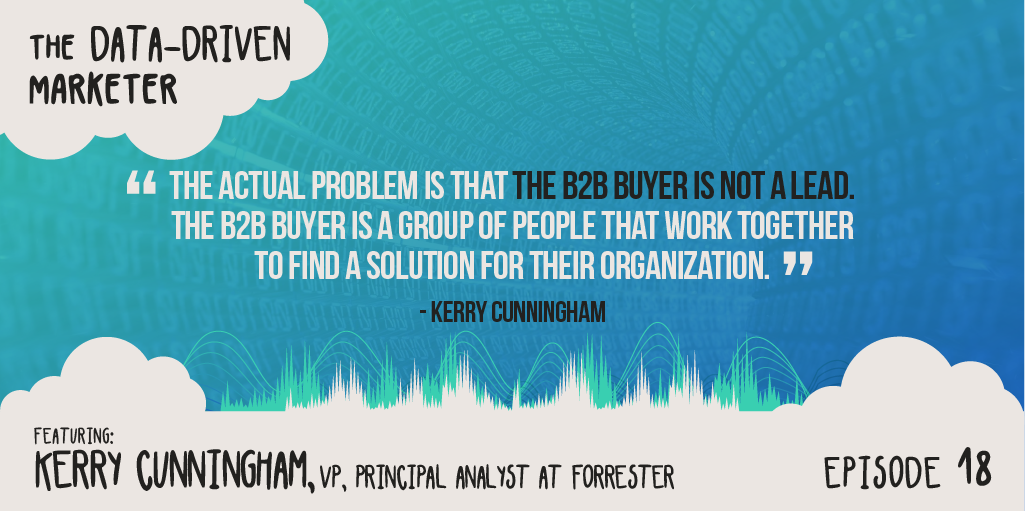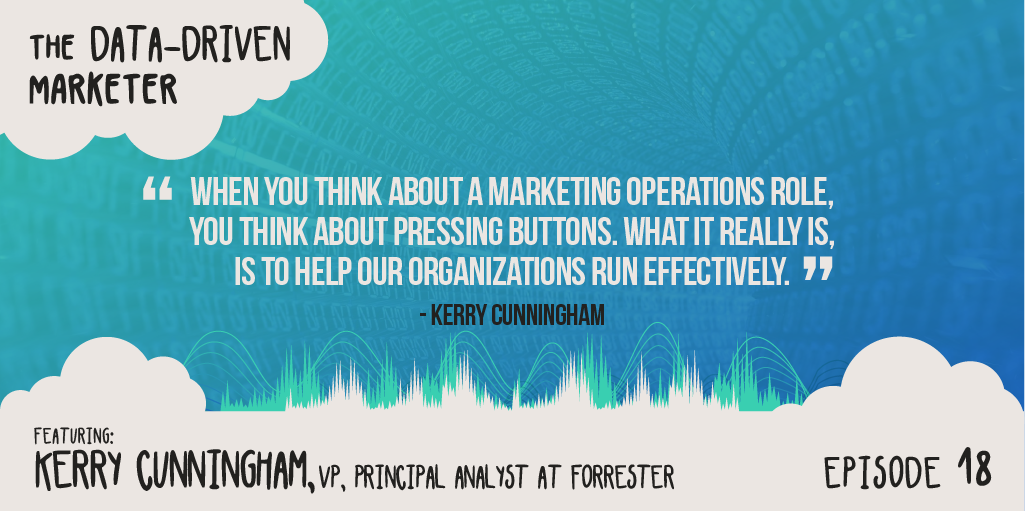
Theoretical physics and your buying groups
Who’s visiting your website? And how can you categorize them into buying groups?
You might think you’ve got a grasp on B2B buying behavior and the prospects who are visiting. The ones showing interest in you.
And the reason you think you might have a good grasp on this is because of leads. If you know who your leads are, then you know who’s coming to your site, right?
Not necessarily.
Most of us don’t know what we don’t know about B2B group buying, how we’re fooling ourselves, and what the anonymous traffic to our sites actually means.
Thankfully, there are brilliant people like Kerry Cunningham in the world. Kerry’s our guest on this week’s episode of The Data-Driven Marketer, and he’s here to help shed light on this all-too-common problem.
The Ceiling of Performance
As organizations, we’re continually trying to refine our lead management performance. We’re constantly trying to get to a better spot, but what’is happening is that most of us are beating our heads (or our client’s heads) against a ceiling of performance.
All the focus on improving lead management performance and conversion rates is really blinding us to the actual problem.
The B2B buyer is not the lead.

When these buyers show up on your website, they don’t look like a group of people. You may have five or six or ten people from one prospect organization on your site looking at your content, but you may never know that.
What Does Theoretical Physics Have to do with Buying Groups?
Kerry tells a fascinating story in this episode about Richard Feynman.
Among winning the Nobel prize and working on the Atomic Bomb (Project Manhattan) while still in grad-school, Feynman also popularized “Feynman’s First Principle.”
“You should never fool yourself, but you are the easiest person in the world to fool.”
Kerry says we’re fooling ourselves in the B2B world.
We’re fooling ourselves into thinking we have a grasp or a handle about WHO is coming to our site. About WHO all that anonymous web traffic represents.
Odds are, those leads are part of a larger B2B group buying team.
But again, we’re all fooling ourselves, so we’d never know that.
The Creative Side of Theoretical Physics
Feynman was also incredibly creative.
“One of my key takeaways from reading Feynman was just how creative he was, and how we’ve stifled the creativity in marketing roles today,” Kerry says.

How do you get creative with marketing operations?
First, realize you’re not looking at individual leads. You’re likely looking at multiple people from the same buying group.
If 98% of all web traffic is anonymous, you’ve got to figure out WHO is on your site. After all, they’re not there by accident, and if a buying group is larger than one single person, it likely means that they want something from you.
If you could localize the traffic coming to your site and realize you’ve got ten people on one account looking at your site?
Drop what you’re doing and get salespeople inside that account.
Now.
Again, we’re the easiest people to fool.
You may think you know which prospects are looking, but if you don’t’ know how many leads you have from a given organization, you don’t’ actually know.
And if you’re fooling yourself in this area, where else are you being fooled?
What else don’t you know about B2B buying behavior?
This post is based on an interview with Kerry Cunningham of Forrester
To hear the full episode, and many more just like it, subscribe to The Data-Driven Marketer podcast on Apple Podcasts, or our website.
